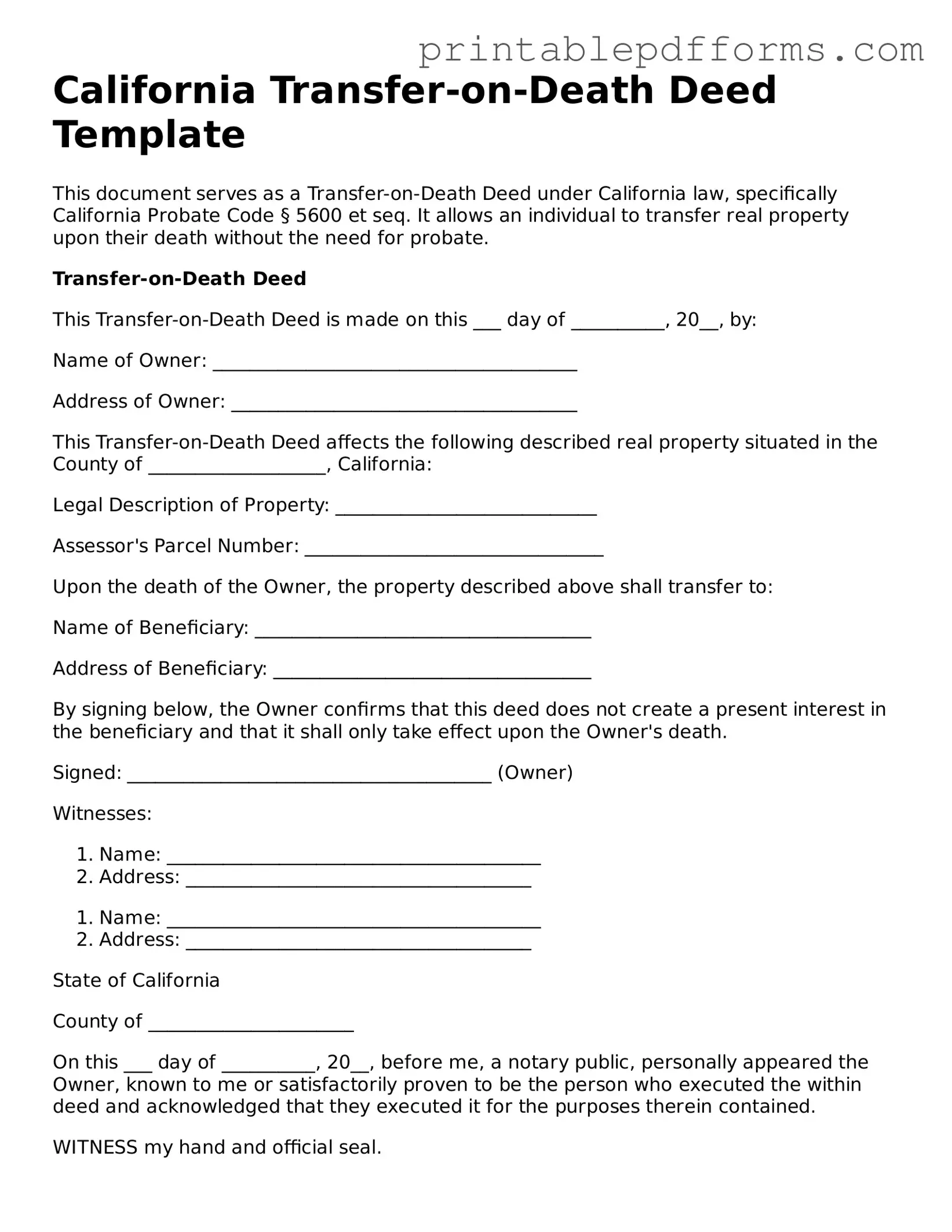California Transfer-on-Death Deed Template
This document serves as a Transfer-on-Death Deed under California law, specifically California Probate Code § 5600 et seq. It allows an individual to transfer real property upon their death without the need for probate.
Transfer-on-Death Deed
This Transfer-on-Death Deed is made on this ___ day of __________, 20__, by:
Name of Owner: _______________________________________
Address of Owner: _____________________________________
This Transfer-on-Death Deed affects the following described real property situated in the County of ___________________, California:
Legal Description of Property: ____________________________
Assessor's Parcel Number: ________________________________
Upon the death of the Owner, the property described above shall transfer to:
Name of Beneficiary: ____________________________________
Address of Beneficiary: __________________________________
By signing below, the Owner confirms that this deed does not create a present interest in the beneficiary and that it shall only take effect upon the Owner's death.
Signed: _______________________________________ (Owner)
Witnesses:
- Name: ________________________________________
- Address: _____________________________________
- Name: ________________________________________
- Address: _____________________________________
State of California
County of ______________________
On this ___ day of __________, 20__, before me, a notary public, personally appeared the Owner, known to me or satisfactorily proven to be the person who executed the within deed and acknowledged that they executed it for the purposes therein contained.
WITNESS my hand and official seal.
Signature: ________________________________________ (Notary Public)
My commission expires: ____________________________
